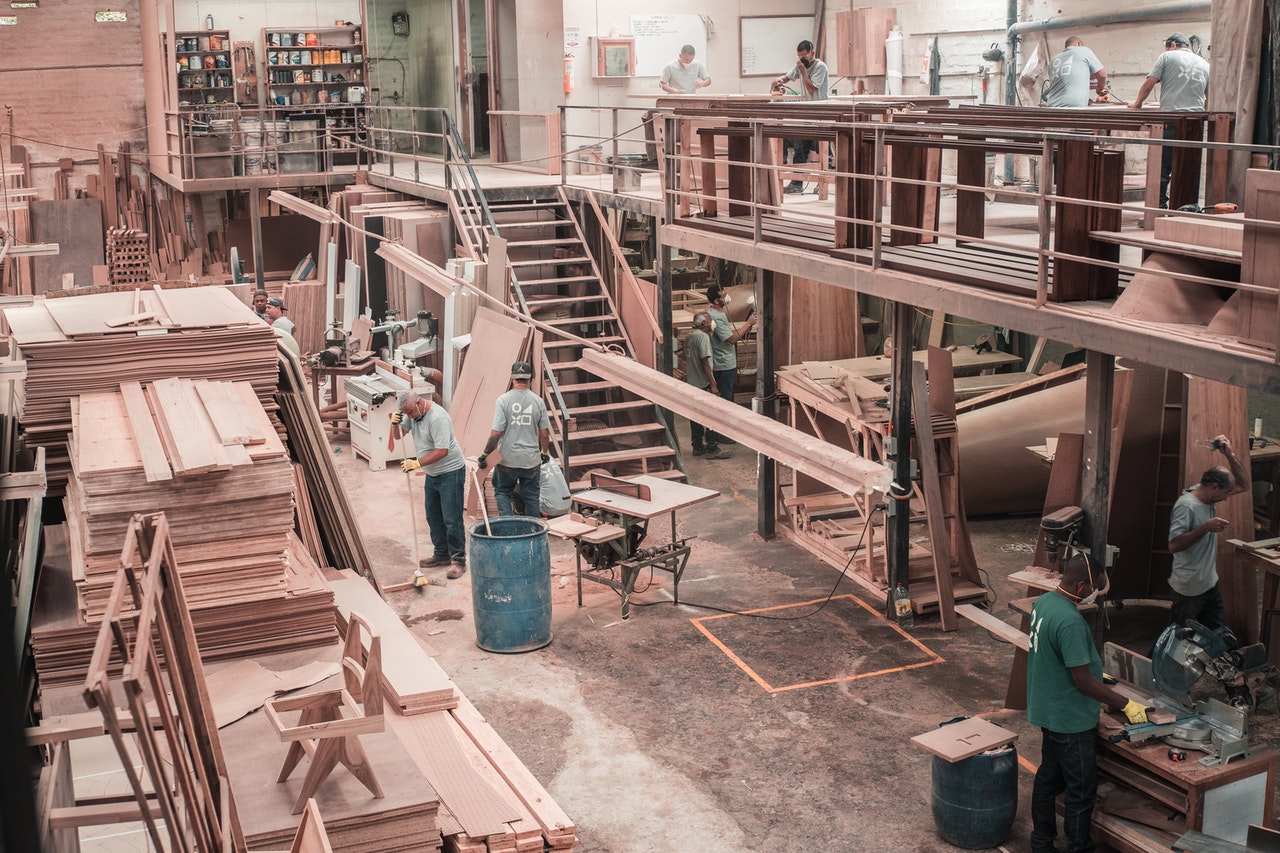Even as the pandemic opened many challenges for businesses, it has been a game-changer in many ways.
The technology switch is the biggest advantage it has brought, as organizations had to make a sudden transition to remote models only to stay afloat. Traditional domains like manufacturing and construction became comfortable with the idea of innovation. If you see the silver lining, there is a lot to be happy about, more so if you run a manufacturing company.
After a year, you will probably know that it is possible to survive and thrive in a crisis, provided you can adapt with agility. Now that businesses are close to reopening, it makes sense to rethink and plan your comeback in the new normal.
The good thing is that recovery and revival do not have to be as daunting as it sounds. If you see it as an opportunity, it may help you revamp your manufacturing process.
Here are some strategies that can help you make a successful comeback in the new normal.
1. Rework on floor plans
 As workers get back to the factory, you need to prioritize their health and wellness. You will probably have a fair idea about floor planning as most industrial units worked with limited capacities during the planning.
As workers get back to the factory, you need to prioritize their health and wellness. You will probably have a fair idea about floor planning as most industrial units worked with limited capacities during the planning.
You will need to plan while keeping the government guidelines on social distancing in mind. It may require layout changes, which you must implement well before people are back to work.
If you have a small unit, you may even consider moving to a larger space. But the decision entirely hinges on your financial capacity.
2. Get a step ahead with smart scheduling
If upgrading space and changing layout are not feasible alternatives, you can opt for smart scheduling. The manufacturing industry is accustomed to shift-based scheduling, which makes it easy to embrace this measure.
It is a good idea to implement a scheduling software solution before reopening to ensure proper allocation and cut down the workload of supervisors. A digital solution saves time on scheduling and eliminates the possibility of errors, no matter what your team size is.
3. Implement other safety measures
Employee safety is the top priority in the new normal. So you must have all precautionary measures in place as a part of the comeback plan.
It is vital from the compliance perspective because the last thing you will want to encounter is hassles from authorities. Safety measures will also save you from lawsuits because employees can sue you if they contract the infection at the workplace.
Prepare a checklist that includes all measures like providing personal protection equipment, setting up hand hygiene stations, and regular sanitization of equipment and tools. When you plan for safety, consider it for visitors as well.
4. Invest in team training
The labor shortage is a real concern for manufacturers right now. As you reopen, you may need to onboard new resources because the old ones may not be around. Even those making a comeback are likely to be out of touch.
Additionally, new shifts, innovative equipment, and modern technologies will make training essential when you open again.
Consider training a long-term business investment instead of an expense. It makes people more productive and confident and cuts the cost of errors and wastage. Additionally, trained employees are less likely to get into accidents, a major risk in industrial settings.
5. Maximize efficiency
A comeback sounds like the best thing since last year, but it also means you should get into the action with full force. Focus on maximizing efficiency so that you can do more with less and cover-up for the year lost.
CNC machining can get your unit on track as it facilitates prototyping without hard tooling, and the turnaround times are far less than with the regular machines. It can take you a step closer to manufacturing innovation, which should be on top of your mind in the new normal.
6. Automate what you can
 Automation has emerged as a key trend in the manufacturing industry as the pandemic forced physical units to operate with the minimum number of people.
Automation has emerged as a key trend in the manufacturing industry as the pandemic forced physical units to operate with the minimum number of people.
Automation and robotics are still worthy investments, even as you get the labor back on the floor. They can let you operate with smaller teams and even manage machinery remotely. It helps you follow the social distancing norms on the premises. But the benefits will extend for the long haul, even as the virus goes away for good.
Automation frees up the labor to focus on tasks requiring human intelligence and decision-making. It increases productivity and curbs wastage by minimizing the chances of errors. The best piece of advice is to automate everything you can in the new normal
7. Rebuild the supply chain
One of the biggest challenges for the manufacturing industry in the pandemic is supply chain resilience. You can expect to face issues even as you reopen because the supply chain is still staggering to realign with the changing scenario.
Planning for resilience can help you protect production and sales from supply chain bottlenecks. Consider options such as on-shore or near-shore where possible. You can stockpile inventory to make sure that you never fall short.
Diverse sourcing is another good way to build stronger supply chains and ensure lasting recovery.
8. Use digitization for competitive advantage
The best strategy for a comeback is digital transformation, which every business must invest in regardless of size and scale. You cannot overlook it because every company is doing it, and failing to digitize will get you out of the race.
Conversely, the right technologies can help you in more than one way. They can create financial and operational flexibility, cut costs, and rebuild your growth foundation to get back market opportunities in the new normal.
Software technologies bring much-needed resilience and give you an edge over competitors. Embracing them will require considerable investment, but there is no way you can miss them out on your recovery roadmap.
9. Remote collaboration is here to stay
Even as you plan a comeback, you need to remember that things will not be the same in the new normal. Remote collaboration is here to stay for the long haul because everyone may not be physically on-site at all times.
Operators run machines, but they may not have the maintenance staff or vendors around to help them when there is a sudden breakdown. It is vital to empower everyone in the team with virtual collaboration tools so that they can connect when they need to. It will prevent glitches and downtime, which are the last things you will want to happen on reopening.
The road to a comeback is a long one. It is even more challenging in a labor-intensive and traditional domain like manufacturing. But an open and flexible mindset gives you a great start. It makes you comfortable with the idea of embracing technology, which can be your lifeline in the new normal. Implementing innovative solutions sets you up for revival, but agility opens the opportunity to thrive after a comeback.
The faster you pick a new technology, the better are the chances of standing apart in the competitive landscape. Follow these strategies and create a roadmap for a swift and successful comeback.

The Ideas Plus Business Editorial team is responsible for this post. For collaborations and partnership requests, kindly send an email to the Editorial Team at ideasplusbusiness[at]gmail[dot]com for the terms and conditions. You can also follow IdeasPlusBusiness.com on Twitter here and like our page on Facebook here.

